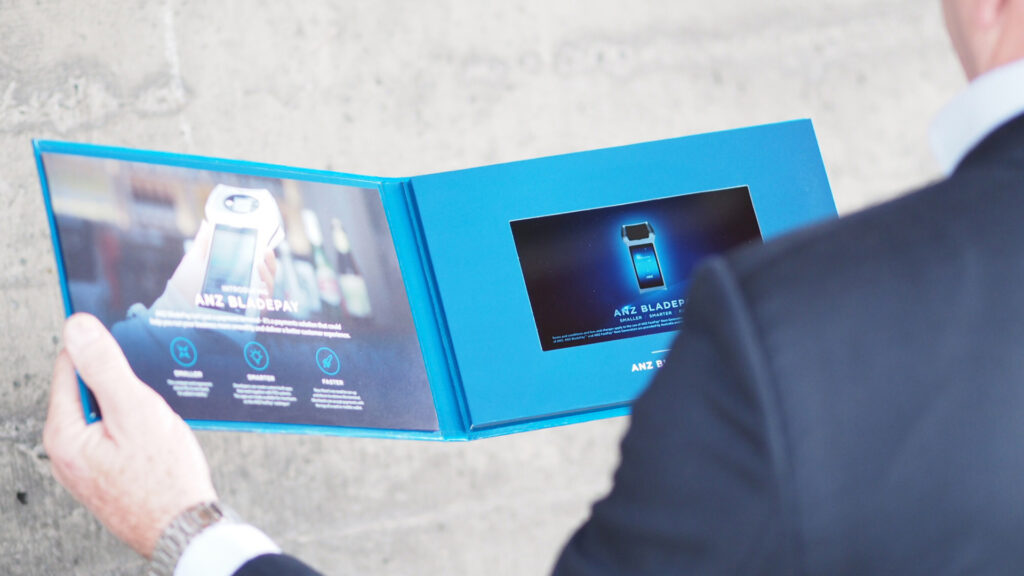HD Screen vs. HD IPS Screen: Making the Right Choice

Video brochures offer captivating visuals and immersive experiences to showcase your most valuable videos. There are two types of screens available to video brochure customers. Whether you opt for the affordability of standard HD screens or the superior image quality of HD IPS screens, investing in the right display technology is key to maximizing the effectiveness of your video brochure campaigns.
Let’s explore the differences between standard HD screens and premium HD IPS screens and learn how they impact the viewing experience:
Exploring Top Quality HD IPS Screens:
HD IPS screens incorporate In-Plane Switching (IPS) technology, known for its superior color accuracy, wider viewing angles, and better contrast ratios compared to standard LCD screens. IPS technology ensures consistent brightness and color accuracy across different viewing angles, making it ideal for applications where image quality and visual consistency are crucial.
Advantages of HD IPS Screens for Video Brochures:
Vibrant and Accurate Colors: IPS screens offer more accurate color reproduction, allowing video brochures to showcase vibrant and lifelike colors that accurately represent the brand’s identity and message.
Wide Viewing Angles: IPS technology ensures that colors remain consistent even when viewed from off-center angles, providing a more engaging and immersive viewing experience for viewers.
Enhanced Image Quality: With improved contrast ratios and deeper blacks, HD IPS screens elevate the overall image quality of video brochures, making them stand out and leave a lasting impression on viewers.
Understanding HD Screens:
HD screens, or high-definition screens, offer a minimum resolution of 720p (1280×720 pixels). These screens provide crisp and clear images, making them suitable for displaying videos, images, and text in video brochures. While HD screens offer decent visual performance, they may have limitations in terms of color accuracy and viewing angles compared to other display technologies.
Advantages of HD Screens for Video Brochures:
Affordability: HD screens are often more cost-effective compared to higher-resolution options, making them a budget-friendly choice for video brochure projects.
Clarity and Detail: HD screens deliver sharp and detailed visuals, allowing viewers to appreciate the content displayed on the brochure with clarity.
Widespread Compatibility: HD screens are widely available and compatible with most video brochure designs, ensuring seamless integration into your marketing campaigns.
Making the Right Choice for Your Video Brochures:
When choosing between HD screens and HD IPS screens for video brochures, it’s essential to consider your specific marketing objectives, budget constraints, and audience preferences. While HD screens offer affordable and decent visual performance, HD IPS screens excel in color accuracy, viewing angles, and overall image quality, making them ideal for projects that prioritize visual impact and engagement.
In conclusion, both HD screens and HD IPS screens have their advantages and applications. By understanding the differences between these technologies and assessing your project requirements, you can make an informed decision that aligns with your marketing goals and ensures a compelling and memorable viewing experience for your audience.
About Us:
Some of the most respected brands in the world have trusted Video Brochures Direct to deliver quality products for them. Here are a few examples:






At Video Brochures Direct, we guarantee quality and industry-leading technologies. We are headquartered in Pensacola, Florida, and have American team members available to discuss your needs. If you’d like to connect with us and request a sample video brochure, reach us by calling 1(888)-609-8889 or emailing hello@videobrochuresdirect.com.
